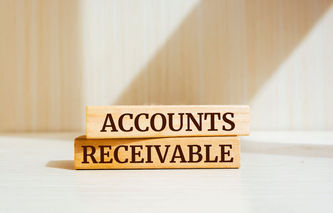Definition
The financial accounting term allowance method refers to an uncollectible accounts receivable process that records an estimate of bad debt expense in the same accounting period as the sale. The allowance method is used to adjust accounts receivable appearing on the balance sheet.
Explanation
Unfortunately, not all customers that make purchases on credit will pay companies the money owed. There are two methods companies use to account for uncollectible accounts receivable, the direct write-off method and the allowance method.
The direct write-off method relies on reports of accounts receivable the company has determined will not be collected. If write off is not material, this method can be used in financial reports. Typically, this approach is restricted to income tax returns.
The allowance method records an estimate of bad debt expense in the same accounting period as the sale. It often takes months for companies to identify specific uncollectible accounts. The allowance method follows the matching principle, which states revenues need to be matched with the expenses incurred in that same accounting period.
Generally, companies will choose between two approaches under the allowance method.
Percentage of Sales: Using historical data, a company examines the relationship between sales and uncollectible accounts receivable. If there is a fairly stable relationship between the two, a company will use the historical Uncollectible Accounts / Credit Sales ratio to estimate the bad debts expense in the current period.
For example, a company might find a historical trend indicating 2% of credit sales are never collected from customers. If that company had $100,000 of credit sales in the current period, it would also record the following journal entry:
Date | Account | Debit | Credit |
3/31/20XX | Bad Debts Expense | $2,000 | |
Allowance for Doubtful Accounts | $2,000 |
This method is sometimes referred to as the income statement approach.
Percentage of Accounts Receivable: Using historical data, a company examines the relationship between accounts receivable and uncollectible accounts. Companies will oftentimes increase the accuracy of these estimates by looking at their aging schedule for patterns, rather than using a composite (or total) of their receivables.
For example, a company might find a historical trend indicating 50% of credit sales over 150 days due are never collected, while 0.5% of credit sales over 30 days are never collected. This approach is illustrated below:
Aging Schedule | Bad Debts Estimate | A/R Balance | Allowance for Bad Debts |
Over 30 days | 0.5% | $300,000 | $1,500 |
31 to 60 days | 1.0% | $100,000 | $ 1,000 |
61 to 90 days | 2.0% | $50,000 | $1,000 |
91 to 120 days | 5.0% | $7,000 | $350 |
120 to 150 days | 15.0% | $5,000 | $750 |
Over 150 days | 50% | $3,000 | $1,500 |
Total Balance | $6,100 | ||
This method is sometimes referred to as the balance sheet approach.
Allowance for bad debt, also known as the allowance for doubtful accounts, is a contra asset account and is used as an offset to accounts receivable. This allows the account to be stated in what is known as net realizable value, where:
Net Realizable Value = Accounts Receivable - Allowance for Doubtful Accounts







